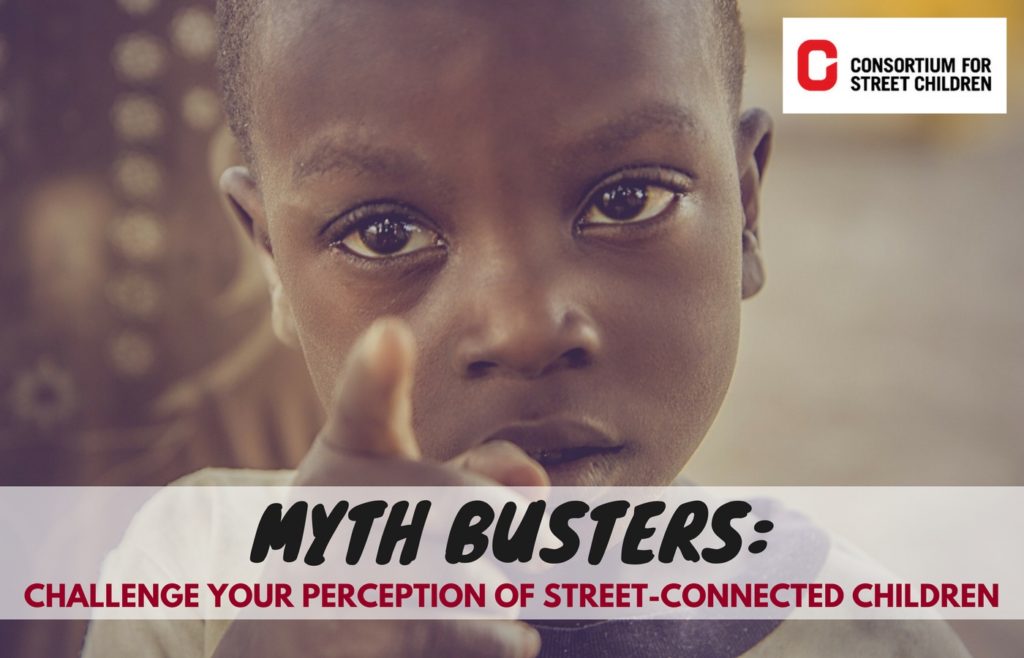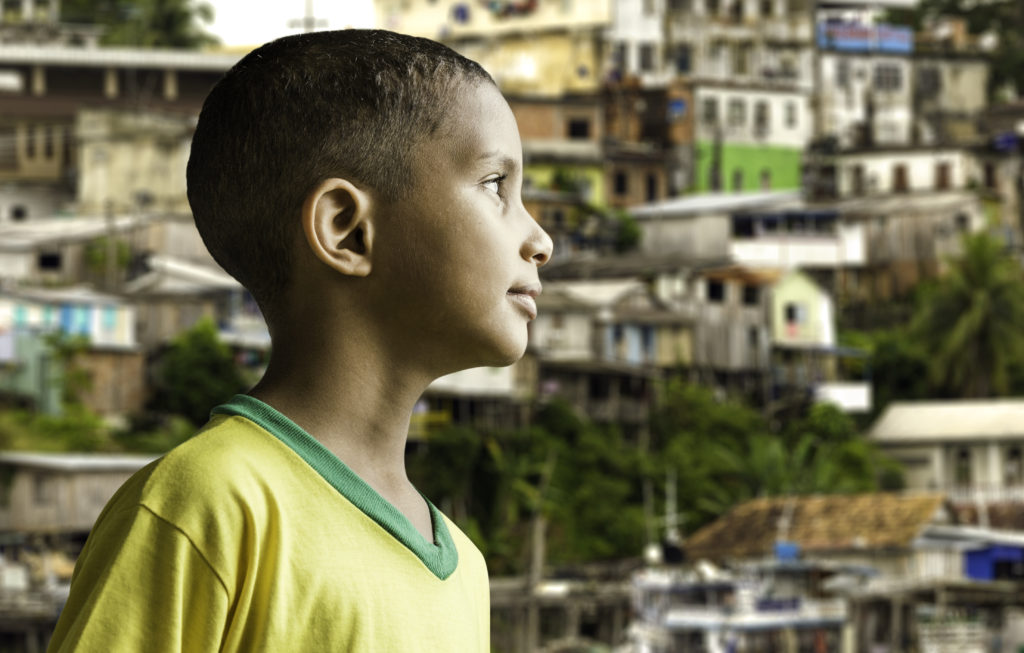About Street Children
Street children are some of the most vulnerable children on the planet
Street Children and Homeless Children – Definitions
In everyday speech, people may use lots of different words or terms. ‘Street children’ and ‘homeless children’ or homeless youth might be used interchangeably, but there are some differences.
Not all children who are homeless end up living in the open on the street. Many end up sleeping in very inappropriate but out of sight places – on the floors of friends or strangers, or sleeping in temporary accommodation like hostels. For example, the homeless charity Shelter estimated in 2018 that as many as 9,500 UK children have spent their Christmas in a hostel or other temporary accommodation, often with one family in a single room, sharing bathrooms and kitchens with other residents who they don’t know or trust.
Conversely, not all children who can be described as ‘street children’ are necessarily homeless. They may work, play or spend their time on the street, but may go back to sleep with their family or parents.
We use the term ‘street children’ or ‘street-connected children’ to describe children who:
- Depend on the streets to live and / or work, either on their own, or with other children or family members; and
- Have a strong connection to public spaces (e.g. streets, markets, parks, bus or train stations) and for whom the street plays a vital role in their everyday lives and identities. This wider group includes children who do not live or work on the street but regularly accompany other children or family members in the streets.
In other words, ‘street children’ are children who depend on the streets for their survival – whether they live on the streets, work on the streets, have support networks on the streets, or a combination of the three.
What is streetism?
If you have been researching the topic of street children, you might have come across the term ‘streetism.’
‘Streetism’ is a relatively new term which means “living on the streets or being of the streets”. It is sometimes used to describe the street children especially in Anglophone Africa.
Why do some children live or work in the street?
The answer is complex — as many street children as there are in the world there are as many reasons for them being there. Every single child has their own unique story. The reasons for their connection to the streets will vary from country to country, city to city, and from person to person.
These factors will also vary over time, such as poverty, displacement due to natural disasters and conflicts or family breakdown all lead to increases in the numbers of street children in a given area.
Economic poverty plays a major role, although other factors are of equally high importance. These can include: parental deaths, parental neglect and other social factors such as violence and abuse of children at home or within communities.
Discrimination, lack of access to justice, a lack of legal status (due to a lack of birth registration for example) all contribute to a situation where a child is living or working on the street.
We have found that children may migrate to the streets for other reasons as well, including:
- sexual, physical or emotional abuse,
- urbanisation,
- HIV / AIDS,
- being forced into criminal activity,
- being rejected from their family for so called “moral” reasons,
- mental health issues,
- substance abuse,
- sexual orientation or gender identity.
While there is no doubt that there are common themes and reasons that push children onto the street, dealing with each child as an individual, with their own backstory and identity, is key to understanding their situation.
How many street children are there?
This is an important question to answer in order that governments are able to devote the resources needed to address street children’s needs. A commonly quoted figure is 100 million street children worldwide, however given that this estimate is from 1989, it is considerably outdated. The true numbers are unknown.
Why don’t we know how many street children there are? Estimated and counting street children are other hidden populations is not easy.
- Street children are a dynamic and mobile population, which requires specific methodologies other than standard household surveys or census.
- Estimates or counts that are done at a fixed point in time can be misleading depending on when the counts takes place – numbers of children in the street can fluctuate either with seasonal change or if the government removes street children ahead of big events international sporting events or global meetings or celebrations.
- They are often invisible – while researchers can take a snapshot of the children currently on the streets, they won’t capture the children who are indoors at that particular day or moment.
- Some groups of children can be less visible on the streets, for example girls, or children with disabilities
- Street children experience high levels of stigma and often are suspicious of attempts to count them, fearing negative consequences as a result of being counted and preferring to remain below the radar.
Despite these challenges, it is crucial to establish reliable numbers of street-connected children and the realities of their lives. Organizations working with street children need accurate data to better design their programmes. Donors need data so they can ensure their health, education and justice funding also reach street children. Governments need accurate data on street children so that they can devote the resources required to fulfill their obligations to these children, under the Child Rights Convention and its specific guidance, UN General Comment 21.
CSC is currently conducting research into methods for counting and estimating the numbers of street children, with the goal of developing a standard methodology that can be used across the sector to make information on the numbers of street children more accurate, aggregatable and comparable.
What are the risks of children being on the streets?
No child should ever be harmed by those who have the duty to protect them.
While children should not be forcibly removed from the only home they know and detained for “their own good”, leaving children exposed to danger with no protection or recourse to justice is also not acceptable.
Many street-connected children are harmed on a daily basis by adults, including government officials and the police, other children, and even their own families. They are also denied access to education and healthcare, which is their right. If national laws criminalize begging or loitering, they can face jail just for trying to survive.
Street children suffer violence
Children who are already vulnerable due to not being registered, not having an adult being in a position to advocate for them, or not having appropriate shelter can leave them vulnerable to abuse by those who know they have no protection from family or the law, and no recourse to justice. Children are often robbed, beaten or otherwise targeted even by law enforcement or government officials in some cases.
Street children are targeted by abusers
Street-connected children are vulnerable to exploitation by abusers who may sexually assault them, forcibly recruit them into criminal activities, traffic them and send them out into the streets to beg and steal.
Street children can get recruited into gangs
For many street children street gangs can act as ‘surrogate families’ which can protect them from outsider violence or harassment and offering support, however it draws children into violent criminal activities and drug use.
Street children may become addicted to drugs
While the image of all street children being addicted to drugs is inaccurate, some street-connected children do engage in substance use to cope with the realities of living on the streets, trauma, illness, hunger, stigmatisation and discrimination. Long term use at the age when children are still physically and mentaly developing can cause long term problems in adulthood.
Street children can suffer from mental health issues
Although many street children show incredible resilience in the face of unspeakable hardships, many studies show their sense of well-being to be generally low. Street-connected children often suffer from depression, anxiety and trauma, which then may lead to substance abuse and a risk of suicide.
The stigma and social exclusion faced by street-connected children has a negative impact on their mental well-being. This may also vary from country to country. For example, one study showed street children in Morocco presented as ‘poetic’ daydreamers surrounded but not corrupted by violence, while research from Nepal found that children internalise strong negative images of themselves, mirroring society’s view of them as delinquents.
Street children get punished by a legal system that has a discriminatory effect on being homeless or not registered at birth
CSC’s research demonstrates that the vast majority of street-connected children processed through justice systems were either children in perceived (rather than actual) conflict with the law (arrested for begging, vagrancy, commercial sexual exploitation, truancy or running away from home) or children in need of care (detained ‘for their own protection’ and not on suspicion of committing a criminal activity).
In many countries, street-connected children an criminalised for so called ‘status offences’, i.e. a noncriminal act that is considered a law violation only because of a youth’s status as a minor. For example, children may be arrested just for being on the street under a loitering charge.


